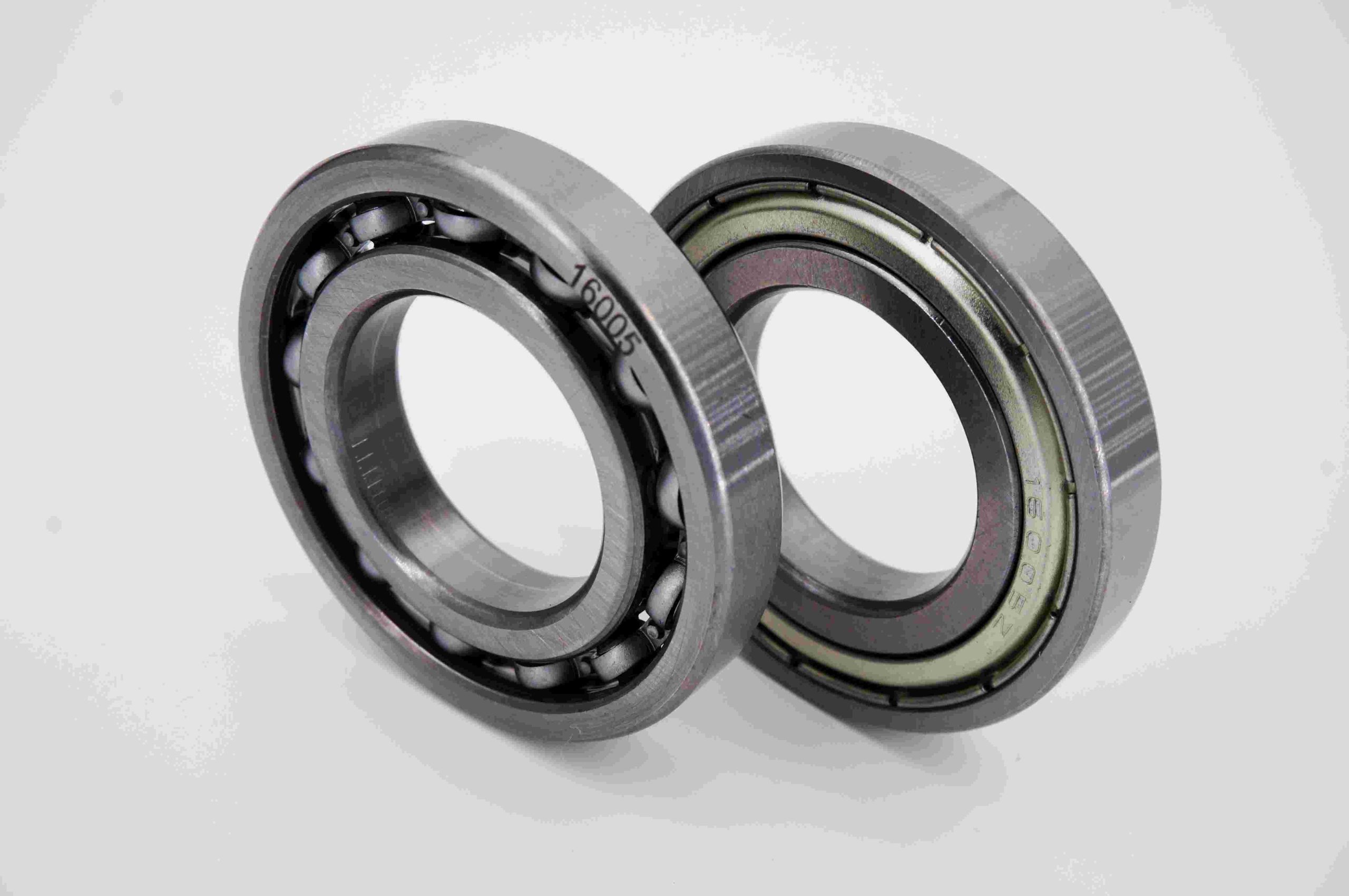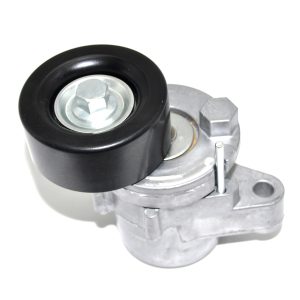소개
텐셔너 및 아이들러 풀리 는 모든 자동차 엔진의 액세서리 벨트 구동 시스템에 필수적인 요소입니다. 벨트의 적절한 장력과 정렬을 유지하여 교류 발전기, 파워 스티어링 펌프, 에어컨 컴프레서 등 다양한 엔진 액세서리의 효율적인 작동을 보장하는 데 중요한 역할을 합니다. 이러한 중요성에도 불구하고 이러한 풀리는 일상적인 유지보수 과정에서 간과되는 경우가 많아 조기 마모, 벨트 미끄러짐, 심지어 치명적인 엔진 고장으로 이어질 수 있습니다.
이 문서에서는 텐셔너 및 아이들러 풀리 유지 관리의 중요성에 대해 자세히 살펴보고, 점검, 유지 관리 및 교체 방법에 대한 자세한 지침을 제공하며, 이러한 부품을 소홀히 할 경우 발생할 수 있는 잠재적 결과에 대해 강조합니다. 자동차 전문가와 애호가는 텐셔너와 아이들러 풀리의 역할과 유지 관리를 이해함으로써 차량의 수명을 크게 연장하고 값비싼 수리를 피할 수 있습니다.
텐셔너 및 아이들러 풀리 이해
유지보수 방법에 대해 알아보기 전에 엔진 내 텐셔너와 아이들러 풀리의 기능을 이해하는 것이 중요합니다.
- 텐셔너 풀리: 텐셔너 풀리는 뱀 모양 벨트에 정확한 장력을 가하여 엔진 액세서리의 모든 풀리와 접촉하여 벨트가 단단하게 유지되도록 설계되었습니다. 이 풀리는 스프링이 장착된 암에 장착되어 시간이 지남에 따라 벨트가 늘어남에 따라 자동으로 조정되어 일정한 장력을 유지합니다.
- 아이들러 풀리: 반면 아이들러 풀리는 뱀 벨트의 가이드 역할을 하여 다양한 엔진 구성품 주위로 벨트가 지나갈 수 있도록 도와줍니다. 아이들러 풀리는 텐셔너 풀리와 달리 장력을 조절하지 않으며, 벨트가 제자리에 고정되고 원활하게 작동할 수 있도록 추가적인 접촉 지점을 제공하는 것이 주요 기능입니다.
두 풀리는 높은 스트레스와 온도에서 지속적으로 작동하기 때문에 지속적으로 마모될 수 있습니다. 따라서 엔진에 심각한 문제를 일으킬 수 있는 고장을 예방하기 위해서는 정기적인 점검과 유지보수가 중요합니다.
텐셔너 및 아이들러 풀리 문제의 징후
텐셔너 또는 아이들러 풀리 고장의 징후를 인식하는 것이 효과적인 유지보수를 위한 첫 번째 단계입니다. 일반적인 증상은 다음과 같습니다:
- 비정상적인 소음: 풀리 문제의 가장 명백한 징후 중 하나는 엔진 베이에서 발생하는 비정상적인 소음입니다. 삐걱거리거나 삐걱거리거나 덜컹거리는 소리는 종종 풀리 베어링이 마모되었거나 손상되었음을 나타냅니다.
- 벨트 착용: 과도하거나 고르지 않은 벨트 마모는 텐셔너 또는 아이들러 풀리가 제대로 작동하지 않는다는 신호일 수 있습니다. 벨트가 닳거나 금이 가거나 유약이 생긴 것처럼 보이면 풀리 결함으로 인한 부적절한 장력 또는 정렬 불량 때문일 수 있습니다.
- 벨트 미끄러짐: 뱀 벨트가 풀리에서 미끄러지거나 적절한 접촉을 유지하지 못하면 텐셔너 풀리가 적절한 장력을 제공하지 못할 수 있습니다. 이로 인해 엔진 액세서리의 동력이 손실되고 벨트가 고장날 수 있습니다.
- 엔진 액세서리 오작동: 텐셔너 또는 아이들러 풀리가 고장 나면 뱀 벨트가 엔진 액세서리와 접촉이 끊어져 교류 발전기, 파워 스티어링 펌프 또는 에어컨 컴프레서와 같은 부품이 오작동을 일으킬 수 있습니다.
- 풀리의 눈에 보이는 마모: 도르래를 물리적으로 검사하면 홈, 균열 또는 변형과 같은 마모 징후가 보일 수 있습니다. 이러한 징후는 풀리 교체가 필요하다는 분명한 신호입니다.
텐셔너 및 아이들러 풀리 유지보수 사례
텐셔너와 아이들러 풀리의 수명과 적절한 기능을 보장하려면 정기적인 유지보수가 필수적입니다. 다음은 이러한 구성 요소를 유지 관리하는 데 관련된 주요 단계입니다:
1. 정기 검사
텐셔너와 아이들러 풀리의 정기적인 점검은 모든 엔진 유지보수 일정의 일부가 되어야 합니다. 뱀형 벨트를 교체할 때마다 또는 벨트 관련 문제의 징후가 있을 때마다 이러한 풀리를 검사하는 것이 좋습니다.
- 육안 검사: 도르래에 균열, 홈, 과도한 유격 등 눈에 보이는 마모나 손상 징후가 있는지 살펴보세요. 도르래의 상태에 대한 단서를 제공할 수 있으므로 사문석 벨트의 상태도 확인하세요.
- 노이즈 확인: 엔진 작동 중 풀리에서 이상한 소음이 들리지 않는지 확인하세요. 삐걱거리거나 갈리는 소리는 종종 베어링이 마모되었음을 나타냅니다.
- 장력 테스트: 텐셔너 풀리의 경우, 뱀 모양의 벨트의 장력을 확인하세요. 벨트가 너무 느슨하거나 너무 조이면 텐셔너가 제대로 작동하지 않는 것일 수 있습니다.
2. 윤활
대부분의 최신 텐셔너 및 아이들러 풀리에는 윤활이 필요 없는 밀폐형 베어링이 장착되어 있지만, 구형 모델의 경우 마찰을 줄이고 조기 마모를 방지하기 위해 가끔 윤활을 해주면 도움이 될 수 있습니다. 구체적인 윤활 요건은 항상 제조업체의 지침을 참조하세요.
3. 벨트 교체
뱀형 벨트는 제조업체의 권장 주기(일반적으로 60,000~100,000마일마다)에 따라 교체해야 합니다. 벨트를 교체할 때는 텐셔너와 아이들러 풀리도 함께 점검하고 필요한 경우 교체하는 것이 좋습니다. 벨트가 마모되면 이러한 풀리에 추가적인 부담을 주어 마모가 가속화될 수 있습니다.
4. 풀리 교체
텐셔너와 아이들러 풀리는 마모, 손상 또는 오작동 징후가 보이면 교체해야 합니다. 제조업체의 사양을 충족하거나 초과하는 고품질 교체 부품을 사용하는 것이 중요합니다. 품질이 떨어지는 풀리는 필요한 장력이나 내구성을 제공하지 못해 조기에 고장이 발생할 수 있습니다.
- 텐셔너 풀리 교체: 텐셔너 풀리를 교체하려면 먼저 텐셔너 암을 돌려서 뱀 벨트의 장력을 완화하세요. 기존 풀리를 제거하고 새 풀리를 설치하여 올바르게 정렬되었는지 확인합니다. 벨트에 장력을 다시 가하고 올바르게 정렬되었는지 확인합니다.
- 아이들러 풀리 교체: 아이들러 풀리 교체는 텐셔너 풀리와 유사합니다. 기존 풀리를 제거하고 새 풀리를 설치하여 벨트에 단단히 고정되고 올바르게 정렬되었는지 확인하기만 하면 됩니다.
5. 정렬 확인
엔진의 액세서리 구동 시스템을 효율적으로 작동하려면 서펜타인 벨트를 올바르게 정렬하는 것이 중요합니다. 정렬이 잘못되면 벨트와 풀리가 과도하게 마모되어 조기 고장을 일으킬 수 있습니다.
- 정렬 도구: 뱀 모양의 벨트의 정렬 상태를 점검할 수 있는 특수 도구를 사용할 수 있습니다. 이러한 도구를 사용하면 정렬 문제를 식별하고 풀리가 올바르게 배치되었는지 확인할 수 있습니다.
- 정렬 오류 수정: 오정렬이 감지되면 풀리의 위치를 조정하거나 오정렬의 원인이 되는 마모된 부품을 교체해야 할 수 있습니다.
6. 성능 모니터링
텐셔너와 아이들러 풀리를 교체하거나 정비한 후에는 엔진의 액세서리 구동 시스템의 성능을 모니터링하는 것이 중요합니다. 비정상적인 소음, 벨트 마모 또는 액세서리 오작동은 해결해야 할 근본적인 문제를 나타낼 수 있으므로 주의를 기울이세요.
풀리 유지 관리 소홀의 결과
텐셔너와 아이들러 풀리를 적절하게 유지 관리하지 않으면 다음과 같은 다양한 문제가 발생할 수 있습니다:
- 벨트 고장: 풀리가 오작동하면 뱀 벨트가 미끄러지거나 닳거나 끊어져 필수 엔진 액세서리의 동력이 손실될 수 있습니다.
- 액세서리 오작동: 풀리가 마모되거나 손상되면 벨트가 엔진 액세서리와 접촉이 끊어져 교류 발전기, 파워 스티어링 펌프 또는 에어컨 컴프레서와 같은 주요 구성품이 오작동할 수 있습니다.
- 엔진 과열: 경우에 따라 풀리 고장으로 워터 펌프가 작동을 멈춰 엔진 과열 및 잠재적인 엔진 손상으로 이어질 수 있습니다.
- 수리 비용 증가: 풀리 유지보수를 소홀히 하면 전체 액세서리 드라이브 시스템 교체 또는 엔진 손상 등 더 광범위하고 비용이 많이 드는 수리가 발생할 수 있습니다.
결론
텐셔너와 아이들러 풀리는 작은 부품이지만 엔진의 액세서리 구동 시스템을 효율적으로 작동시키는 데 있어 그 역할은 아무리 강조해도 지나치지 않습니다. 이러한 풀리의 정기적인 점검, 유지보수 및 적시 교체는 뱀 벨트의 수명과 엔진 액세서리의 올바른 작동을 보장하는 데 필수적입니다.
자동차 전문가와 애호가는 이 글에서 설명하는 유지 관리 방법을 따르면 풀리 고장과 관련된 일반적인 함정을 피하고 비용이 많이 드는 수리 위험을 줄이며 차량의 원활한 작동을 유지할 수 있습니다. 잘 관리된 풀리 시스템은 엔진의 성능을 향상시킬 뿐만 아니라 차량의 전반적인 신뢰성과 안전에도 기여한다는 사실을 기억하세요.




